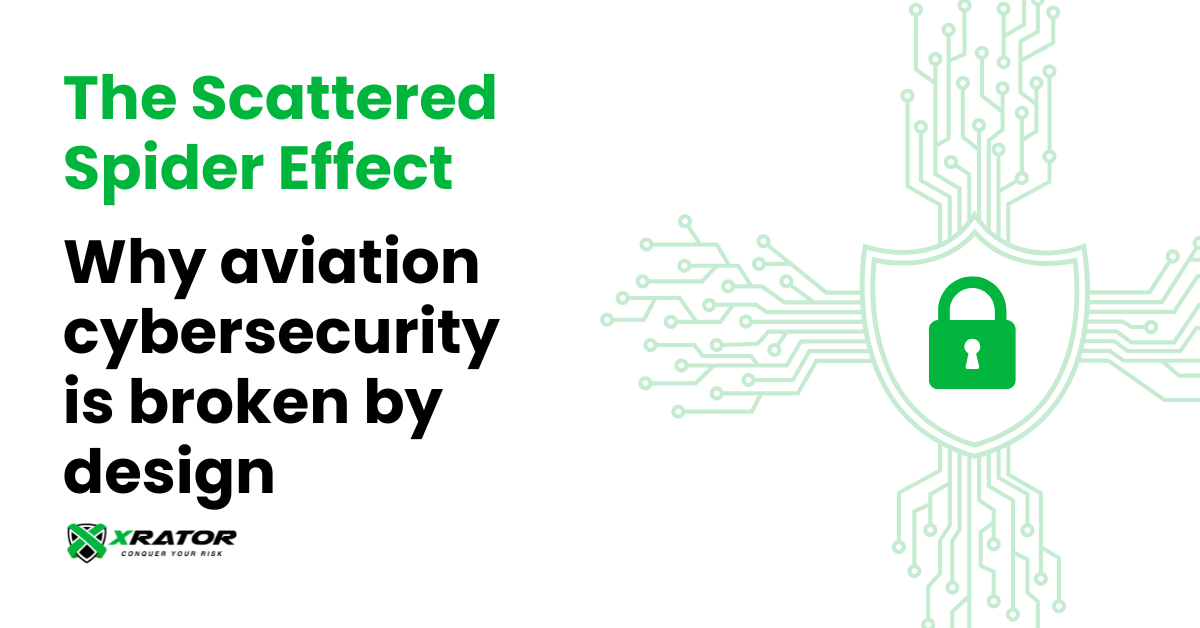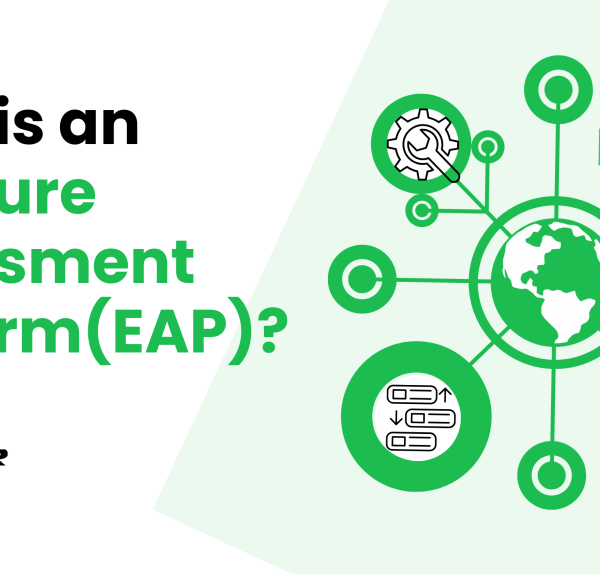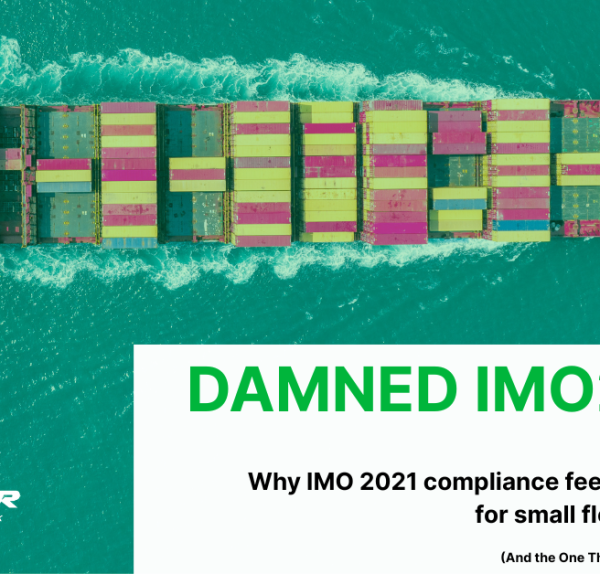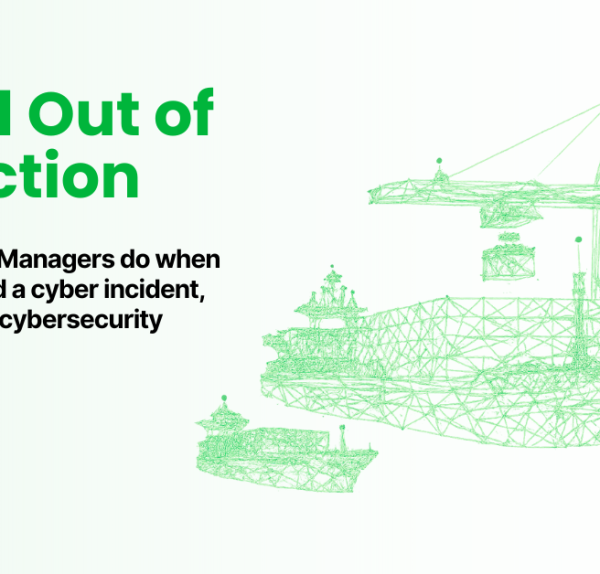Aviation cybersecurity is architecturally predisposed to failure. Cyber Threat Actor are weaponizing the very cultural and operational DNA that makes aviation function: the same interconnected, trust-based systems that enable global aviation also make it exquisitely vulnerable to social engineering attacks.
The conventional narrative focuses on technical fixes: better firewalls, stronger authentication, network segmentation. But research into Scattered Spider’s systematic targeting of aviation reveals a deeper diagnostic: aviation cybersecurity fails because it treats symptoms while ignoring the disease. The industry’s safety-first culture, regulatory fragmentation, and operational imperatives create an environment where threat actors can exploit human psychology and organizational dynamics more effectively than technical vulnerabilities.
This analysis, using the Scattered Spider use case as the primary lens, exposes five perspective-reversing insights that challenge fundamental assumptions about aviation cybersecurity and point toward a refreshing perspective of aerospace security strategy.
1. The CYBAIRO methodology: Executive framework for aviation cybersecurity operations
For aviation cybersecurity executives facing sophisticated threats like Scattered Spider, the AERO-SHIELD framework provides actionable operational methodology for systematic threat defense in aviation environments. Implementation requires structured assessment, targeted hardening, and continuous monitoring with measurable board-level outcomes.
1.1 Phase 1: Assessment and Intelligence Gathering (30-60 days)
Establish comprehensive threat landscape understanding through systematic data collection focused on aviation-specific attack vectors. Human Factor Analysis requires detailed assessment of employee roles with elevated access privileges, social engineering susceptibility mapping, and organizational hierarchy exploitation potential. Convergence Architecture Mapping demands complete inventory of IT/OT integration points, third-party system interfaces, and operational technology dependencies. Regulatory Gap Analysis should identify compliance framework overlaps, jurisdictional vulnerabilities, and governance blind spots that sophisticated threat actors exploit.
Deliverable for Board: Quantified risk assessment ranking critical vulnerabilities with business impact projections and recommended investment priorities.
1.2 Phase 2: Hardened Defense Implementation (60-120 days)
Deploy targeted countermeasures addressing social engineering and convergence architecture vulnerabilities. Identity Verification Hardening requires implementation of multi-channel authentication for help desk interactions, mandatory callback verification for system access requests, and biometric authentication for privileged operations. Supply Chain Security Controls demand systematic vendor security assessment, continuous third-party monitoring, and contractual security requirements with measurable compliance metrics. Operational Technology Protection involves network micro-segmentation between IT and operational systems, zero-trust architecture for critical infrastructure access, and automated anomaly detection for operational technology environments.
Deliverable for Board: Implementation roadmap with specific security control deployment timelines, budget requirements, and risk reduction metrics.
1.3 Phase 3: Continuous Monitoring and Response (Ongoing)
Establish systematic threat intelligence and incident response capabilities designed for aviation operational continuity. Threat Intelligence Operations should include dedicated monitoring of aviation-targeting threat actors, social engineering attack pattern analysis, and predictive threat modeling based on operational vulnerabilities. Incident Response Planning requires preparation for extended operational disruptions, alternative communication channels during system compromise, and business continuity procedures that maintain flight safety during cyber incidents.
Performance Measurement involves continuous assessment of security control effectiveness, threat actor adaptation analysis, and regular tabletop exercises simulating aviation-specific attack scenarios.
Deliverable for Board: Monthly threat intelligence briefings with specific threat actor activity affecting aviation sector and quarterly security posture assessments with trend analysis.
1.4 Implementation Guidelines for Aviation Executives
Help Desk Security Transformation: Replace traditional password-based authentication with multi-factor identity verification requiring callback confirmation, manager approval for elevated access requests, and mandatory documentation of all access grants. Timeline: 30 days implementation, 90 days full deployment.
Supply Chain Risk Management: Implement automated third-party security monitoring, contractual security requirements with penalty clauses, and quarterly vendor security assessments with documented compliance tracking. Timeline: 60 days vendor contract amendments, 120 days monitoring system deployment.
Operational Technology Protection: Deploy network segmentation isolating operational systems from corporate networks, implement privileged access management for critical infrastructure, and establish 24/7 monitoring of operational technology environments. Timeline: 90 days architecture design, 180 days full implementation.
Executive Protection Program: Establish enhanced security awareness training for C-suite executives, implement dedicated security liaison for senior leadership, and create secure communication channels for crisis situations. Timeline: 30 days program design, 60 days full deployment.
Business Continuity Enhancement: Develop cyber incident response procedures maintaining flight operations, establish alternative operational procedures during system compromise, and create communication protocols for passenger and regulatory notification. Timeline: 60 days procedure development, 90 days testing and validation.
Budget Justification Framework: Present cybersecurity investment as operational continuity insurance rather than compliance cost, quantify potential revenue loss from operational disruption, and demonstrate competitive advantage through enhanced security posture.
2. The economic delusion
Aviation cybersecurity operates under a catastrophic economic delusion: the industry consistently underestimates the true cost of cyber risk while overestimating the cost of effective security measures. This economic misalignment creates systematic underinvestment in cybersecurity relative to actual threat levels, enabling sophisticated threat actors to exploit predictable organizational behavior.
The financial impact analysis reveals the scope of this delusion. Aviation organizations focus on direct costs—incident response, system restoration, regulatory fines—while ignoring indirect costs that dwarf the visible expenses. Economic approach to aviation cybersecurity reflects a probability-impact calculation error. Organizations assume that cyber incidents are low-probability events with manageable impact, justifying minimal security investment. But Scattered Spider’s systematic targeting of aviation demonstrates that cyber attacks are now high-probability events with potentially catastrophic impact.
The supply chain economic dimension amplifies this delusion. Aviation organizations negotiate contracts with hundreds of vendors, often prioritizing cost over security. The industry’s vendor ecosystem scored lowest in cybersecurity assessments (83/100 average), indicating that cost-focused procurement decisions systematically introduce vulnerabilities. Organizations save money on vendor security requirements while creating exponentially larger risk exposure.
The economic delusion extends to opportunity cost calculation. Aviation executives view cybersecurity investment as cost center spending rather than strategic capability development. But effective aviation cybersecurity creates competitive advantages (customer trust, operational reliability, regulatory compliance) that translate directly into business value. Organizations that continue to treat cybersecurity as a cost center rather than a value driver will be systematically disadvantaged in an increasingly threat-rich environment.
3. The governance illusion
Aviation cybersecurity governance suffers from a fundamental category error: the industry treats cybersecurity as a technical compliance issue when it’s actually a strategic business risk. The fragmented regulatory landscape creates an illusion of comprehensive oversight while actually enabling sophisticated threat actors to exploit regulatory gaps and inconsistencies.
The governance architecture reflects aviation’s traditional approach to safety regulation: detailed technical requirements, extensive compliance procedures, and reactive incident response. But aviation cybersecurity threats operate according to entirely different principles. Regulatory frameworks designed for mechanical failures are inadequate for addressing psychological manipulation and social engineering attacks.
Scattered Spider’s success demonstrates this governance failure perfectly. The group’s attacks span multiple jurisdictions, exploit regulatory gaps between agencies, and target organizational processes that fall outside traditional technical compliance requirements. Their social engineering attacks against help desk personnel, for example, exploit human psychology rather than technical vulnerabilities—an attack vector that existing regulations barely address.
The regulatory fragmentation creates strategic blindness about systemic risks. Each agency focuses on its specific domain (FAA on aircraft systems, TSA on airport security, EASA on European operations) while threat actors operate across all domains simultaneously. Scattered Spider’s attacks demonstrate how regulatory silos create exploitable gaps in the overall security architecture.
More fundamentally, aviation cybersecurity governance assumes that compliance equals security. Organizations focus on meeting regulatory requirements rather than addressing actual threats. The industry’s “B” grade cybersecurity rating—significantly lower than other critical infrastructure sectors—reflects this compliance-focused approach that prioritizes regulatory checkbox-checking over threat-based risk management.
The governance illusion extends to international coordination. Aviation is inherently global, with aircraft, passengers, and data crossing borders continuously. But cybersecurity governance remains stubbornly national, with each country implementing separate requirements, standards, and oversight mechanisms. This creates exploitable regulatory arbitrage where threat actors can forum-shop for the most vulnerable jurisdictions.
4. The resilience paradox
Here’s the most counterintuitive finding: aviation’s remarkable cybersecurity resilience may be its greatest vulnerability. Every major aviation cyber incident—Hawaiian Airlines, WestJet, MGM Resorts, SITA—followed the same pattern: organizations maintained flight operations during the attack, declared the incident contained, and resumed normal operations within days or weeks. The industry’s operational continuity success creates a dangerous illusion of cybersecurity effectiveness.
The resilience paradox works like this: aviation’s operational priority system (safety first, schedule second, security third) enables organizations to maintain operations during cyber attacks by isolating compromised systems and reverting to manual processes. This operational resilience, while impressive, creates strategic blindness about the true scope and impact of cybersecurity incidents.
Scattered Spider’s attacks exploit this paradox brilliantly. The group understands that aviation organizations will prioritize operational continuity over security investigation, creating windows of opportunity for persistent access and intelligence gathering. While airlines focus on maintaining flight schedules, attackers establish permanent presence in administrative systems, steal sensitive data, and position themselves for future attacks.
The Hawaiian Airlines incident perfectly illustrates this dynamic. The airline maintained all flight operations during the multi-day cyber incident, leading to industry praise for their incident response capabilities. But operational continuity doesn’t equal security success. The attackers potentially maintained access to sensitive systems for months, exfiltrating data and understanding internal processes that could enable future attacks.
This resilience paradox creates a systematic underestimation of cyber risk across the aviation industry. Organizations measure cybersecurity success by operational continuity rather than security outcomes. Board-level executives receive reports about “successful” incident response because flights weren’t cancelled, while the actual security impact(data theft, system compromise, ongoing persistence) remains hidden in technical details.
The strategic implications are profound. Aviation’s operational resilience enables organizations to survive cybersecurity failures without learning from them. The industry’s safety culture includes extensive post-incident analysis, root cause investigation, and systematic process improvement. Cybersecurity incidents, by contrast, are often treated as successfully managed if operations continue, with limited deep-dive analysis of systemic vulnerabilities.
More troubling is how this resilience paradox affects threat actor behavior. Scattered Spider and similar groups have learned that aviation organizations will prioritize operational continuity over security investigation, creating predictable response patterns that can be exploited. Attackers can maintain persistent access during incident response, knowing that organizations will focus on restoring operations rather than conducting comprehensive security investigations.
The paradox also affects regulatory response. Aviation regulators, seeing that cyber incidents don’t typically affect flight safety, may underestimate the strategic implications of aviation cybersecurity failures. The industry’s operational resilience creates a regulatory blind spot where aviation cybersecurity incidents that would trigger major investigations in other sectors are treated as routine operational issues.
5. The IO/OT convergence catastrophe
Aviation’s digital transformation has created what security experts euphemistically call “IT/OT convergence.” The reality is far more dangerous: aviation has accidentally built a cybersecurity nightmare. The integration of Information Technology and Operational Technology systems has expanded the attack surface and created cascading vulnerability chains that sophisticated threat actors like Scattered Spider can exploit to achieve unprecedented impact.
The technical analysis reveals that modern aviation infrastructure contains thousands of interconnected systems that were never designed to be connected. Air traffic control systems interface with airline networks. Passenger Wi-Fi systems connect to aircraft avionics. Airport operational technology integrates with cloud-based management platforms. Each connection point represents a potential pathway for lateral movement, and the sheer complexity makes comprehensive security mapping virtually impossible.
But the real catastrophe is temporal. Aviation operates on multiple time scales simultaneously. Safety-critical systems require instantaneous response. Maintenance operations follow scheduled intervals. Regulatory compliance operates on annual cycles. Threat actors exploit these temporal mismatches, using slow-moving administrative processes to maintain persistence in fast-moving operational environments.
Scattered Spider’s attacks on Hawaiian Airlines and WestJet demonstrate this temporal exploitation perfectly. The group established presence in administrative systems, then used legitimate administrative processes to gradually expand access to operational systems. By the time organizations detected the intrusion, the attackers had months to understand system architectures, identify critical vulnerabilities, and position themselves for maximum impact.
The supply chain dimension amplifies this convergence catastrophe exponentially. Aviation relies on hundreds of specialized vendors, each with different security standards, update cycles, and operational requirements. The industry’s vendor ecosystem creates an impossibly complex security perimeter where a vulnerability in a single third-party system can cascade through dozens of connected organizations.
Consider the SITA breach that affected 400+ airlines worldwide. A single attack on aviation’s primary passenger service system provider instantly compromised 90% of global airlines. This was a supply chain cascade that demonstrated how aviation’s interconnected architecture turns individual vulnerabilities into systemic risks. The convergence catastrophe reveals a fundamental design flaw in aviation cybersecurity thinking. The industry approaches security as if it’s protecting individual systems, when in reality it’s defending a single, globally interconnected organism. Traditional security models (network segmentation, access controls, endpoint protection) assume clear boundaries between systems. Aviation’s operational reality obliterates these boundaries, creating attack surfaces that span continents and involve thousands of interconnected components.
Most disturbing is how this convergence enables attack amplification. A social engineering attack against a single help desk employee can provide access to identity systems. Identity system compromise enables lateral movement to operational systems. Operational system access allows manipulation of flight-critical processes. What begins as a simple phishing attack can escalate to aircraft safety implications through the convergence architecture that aviation depends on for basic operations.
6. The social engineering industrial complex
The cybercriminal nebula Scattered Spider’s evolution from telecom-focused SIM swappers to aviation-targeting ransomware affiliates signals the emergence of cybercrime as an industrialized social engineering operation. Unlike traditional threat actors who rely also on technical exploitation, Scattered Spider has built what effectively amounts to a social engineering industrial complex specifically designed to weaponize human trust while demonstrating strong resilience despite arrests.
The group’s organizational structure reads like a case study in distributed psychological warfare. Composed primarily of English-speaking individuals aged 16-25 from the US, UK, Canada, and Australia, they possess native linguistic and cultural fluency that enables them to impersonate aviation industry employees with devastating effectiveness.
Their systematic approach to targeting aviation and airlines companies demonstrates an understanding of industry psychology that goes far beyond technical reconnaissance. The aviation industry’s vulnerability to Scattered Spider is structural. Aviation’s operational model depends on rapid decision-making, hierarchical authority structures, and implicit trust between employees, contractors, and vendors. Help desk personnel, under pressure to resolve issues quickly, become the perfect targets for Scattered Spider’s sophisticated impersonation attacks. When a caller claims to be a stranded pilot needing immediate system access, the industry’s service-oriented culture creates pressure to bypass normal verification procedures.
The group’s attack methodology reveals a profound understanding of aviation’s operational psychology. They infiltrate the decision-making apparatus of aviation organizations. Recent incidents show Scattered Spider members joining incident response calls, monitoring Slack channels, and even participating in security briefings about their own attacks. It’s cognitive infiltration designed to corrupt the very systems organizations use to defend themselves.
More troubling is their systematic approach to intelligence gathering. The group maintains detailed profiles of aviation industry employees, using social media analysis, LinkedIn reconnaissance, and data breach compilations to build comprehensive psychological profiles. They understand that aviation professionals often share certain characteristics (attention to detail, rule-following behavior, respect for hierarchy) that can be weaponized through carefully crafted social engineering attacks.
The implications are staggering. If cybercrime groups can industrialize social engineering with this level of sophistication, traditional aviation cybersecurity approaches become obsolete. You can’t patch human psychology. You can’t firewall institutional culture. The aviation industry’s response (additional training, stricter procedures, more authentication factors) may actually increase vulnerability by creating more complex systems that are harder to secure and easier to exploit through social engineering.
7. The next phase of aviation cybersecurity
Scattered Spider’s systematic targeting of aviation signals the emergence of cybercrime as an industrialized threat to critical infrastructure. The group’s success demonstrates that traditional cybersecurity approaches are inadequate for addressing threats that exploit human psychology, organizational dynamics, and systemic vulnerabilities.
The aviation cybersecurity stands at a inflection point. Organizations can continue treating cybersecurity as a technical compliance issue, accepting systematic vulnerabilities as the cost of operational efficiency. Or they can recognize that effective cybersecurity requires fundamental changes in organizational culture, governance structures, and economic priorities.
The stakes couldn’t be higher. Aviation supports $1.9 trillion in economic activity and connects the global economy through critical transportation infrastructure. If the industry cannot develop effective defenses against sophisticated threat actors like Scattered Spider, the consequences will extend far beyond individual organizations to affect global economic stability and national security.
The path forward requires intellectual courage to abandon comfortable assumptions about aviation cybersecurity and strategic vision to build new approaches that address the actual threats facing the industry. The conventional wisdom has failed. The time for radical reimagining has arrived.
Aviation cybersecurity professionals who understand these dynamics and develop new approaches will lead the industry’s transformation. Those who continue applying traditional solutions to novel threats will find themselves increasingly irrelevant in a rapidly evolving threat landscape. The choice is clear: adapt or become irrelevant.
The Scattered Spider effect isn’t just about a single threat actor—it’s about the fundamental transformation of cybersecurity threats facing critical infrastructure. Aviation’s response will determine whether the industry evolves to meet these challenges or remains trapped in obsolete approaches that sophisticated threat actors can exploit with impunity.






